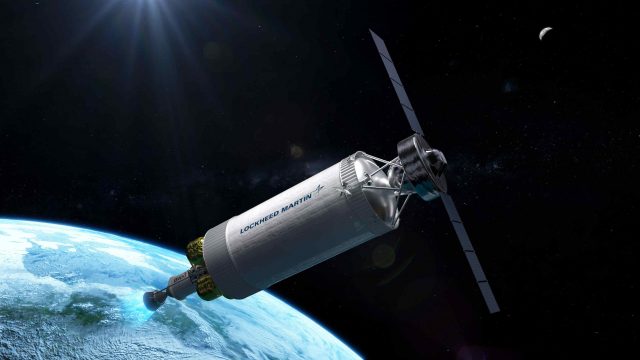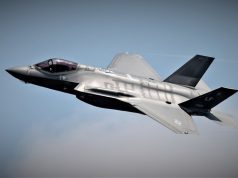The US Defense Advanced Research Project Agency (DARPA) and NASA have awarded Lockheed Martin a contract to design and construct an experimental rocket equipped with a nuclear thermal propulsion engine under the Demonstration Rocket for Agile Cislunar Operations (DRACO) program.
Similar to terrestrial nuclear reactors used for generating electricity, a nuclear thermal rocket (NTR) harnesses the power of fission, the splitting of atoms. As stated on DARPA’s website, nuclear propulsion boasts a high thrust-to-weight ratio, approximately 10,000 times greater than electric propulsion, and exhibits two-to-five times greater efficiency than in-space chemical propulsion.
An NTP system operates by employing a nuclear reactor to rapidly heat hydrogen propellant to extremely high temperatures, which is then directed through the engine nozzle to generate powerful thrust.
The fission-based reactor utilizes a unique high-assay low-enriched uranium (HALEU) to convert cryogenic hydrogen into an intensely hot, pressurized gas. The NTP system’s safety is ensured as the reactor remains inactive until the spacecraft reaches a nuclear-safe orbit.
As the prime contractor, Lockheed Martin has teamed up with BWX Technologies to lead the development of the nuclear reactor and produce the crucial HALEU fuel. The awarded contract, valued at 499 million, is set to launch the demonstration sometime in late 2025 or early 2026, as per reports.
NASA bears the primary responsibility for the development of the NTR engine, aiming to make it fully operational for planned Mars missions around the mid-2030s. Simultaneously, DARPA oversees the environmental safety reviews, launch vehicle requirements, development, and integration processes for DRACO’s rocket, to be launched into orbit. As a military organization, DARPA’s secretary of defense holds the authority for the launch process.
“The space domain is critical to modern commerce, scientific discovery, and national security. The ability to accomplish leap-ahead advances in space technology through the DRACO nuclear thermal rocket program will be essential for more efficiently and quickly transporting material to the Moon and eventually, people to Mars,” said Dr. Stefanie Tompkins, director, DARPA.
DRACO is designed to enable rapid on-orbit maneuvers, essential for enhancing space maneuver and logistics capabilities, such as avoiding adversary anti-satellite attacks and pursuing suspicious adversary satellites for inspection.
Beyond these immediate applications, DRACO also envisions future space operations extending from typical Earth orbits to destinations like the Moon, Mars, and potentially beyond.



























